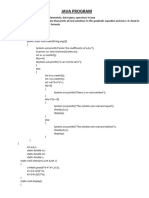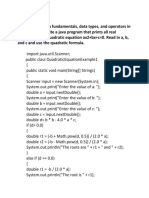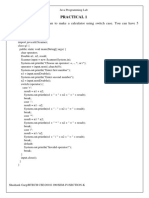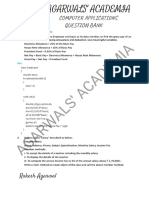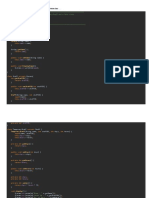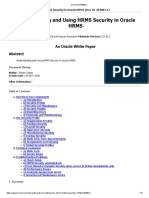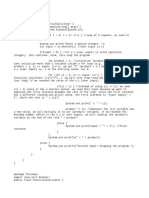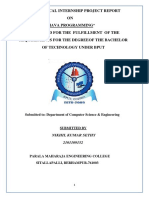0% found this document useful (0 votes)
21 views12 pagesd1 Java Cat-1 Key Paper
The document outlines a Continuous Assessment Test for the course 'Object Oriented Programming using JAVA' with a maximum of 50 marks and a duration of 90 minutes. It includes five programming questions that require students to write Java programs for various scenarios, such as determining winners based on name criteria, checking loan eligibility, and calculating employee salaries. Additionally, it provides guidelines for question paper preparation, including Bloom's Taxonomy levels and difficulty levels for questions.
Uploaded by
Maddirala JagadishCopyright
© © All Rights Reserved
We take content rights seriously. If you suspect this is your content, claim it here.
Available Formats
Download as DOCX, PDF, TXT or read online on Scribd
0% found this document useful (0 votes)
21 views12 pagesd1 Java Cat-1 Key Paper
The document outlines a Continuous Assessment Test for the course 'Object Oriented Programming using JAVA' with a maximum of 50 marks and a duration of 90 minutes. It includes five programming questions that require students to write Java programs for various scenarios, such as determining winners based on name criteria, checking loan eligibility, and calculating employee salaries. Additionally, it provides guidelines for question paper preparation, including Bloom's Taxonomy levels and difficulty levels for questions.
Uploaded by
Maddirala JagadishCopyright
© © All Rights Reserved
We take content rights seriously. If you suspect this is your content, claim it here.
Available Formats
Download as DOCX, PDF, TXT or read online on Scribd
/ 12





























